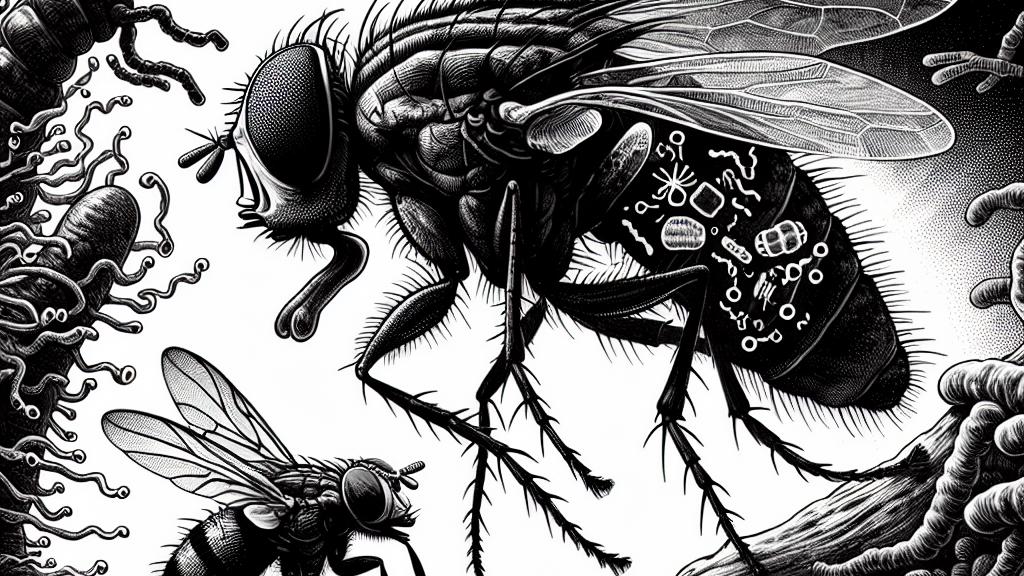How Fruit Flies Outsmart Parasitic Wasps with Gene Theft
Overview
- Fruit flies exhibit an astonishing survival strategy that involves gene theft from bacteria.
- By adopting vital defensive traits, they gain a remarkable edge over parasitic wasps.
- This fascinating evolutionary tactic may unveil new avenues for treating human diseases.

The Fierce Battle for Survival
In the diverse ecosystems across the United States, fruit flies find themselves locked in a relentless struggle against their most formidable foe—parasitic wasps. These wasps don’t just pose a threat; they invade the very bodies of the flies, laying their eggs within, which leads to the fly’s painful demise as the larvae hatch and consume their host from the inside. It's a gruesome fate that echoes themes from classic horror films, capturing the imagination of anyone who hears about it. But here’s the twist: rather than resigning themselves to this nightmare, some fruit fly species have discovered an incredible way to fight back. By stealing critical genes from bacteria—through a process known as horizontal gene transfer—these flies have gained the ability to mount an effective defense against their predators.
Gene Theft: Nature’s Masterstroke
Imagine if species could trade tools to improve their chances of survival! This is precisely what fruit flies achieve through gene theft. Researchers at UC Berkeley have demonstrated that these flies can appropriate a gene encoding a toxin from bacteria, which serves as a powerful weapon against parasitic wasps. In one striking study, scientists used gene editing techniques on various fly species. They found that without the protective gene, almost all the modified flies were swiftly defeated by wasp attacks. This breakthrough not only showcases the remarkable adaptability of fruit flies but also suggests that such gene transfer may be far more common among insects than previously thought. The implications are profound, as understanding these mechanisms could lead to innovative therapies in human medicine, potentially offering new strategies to combat infectious diseases and other health challenges.

Loading...